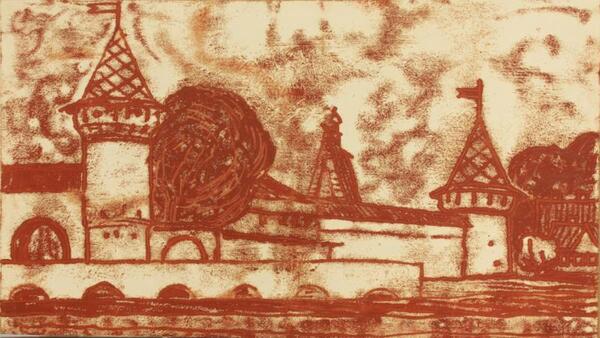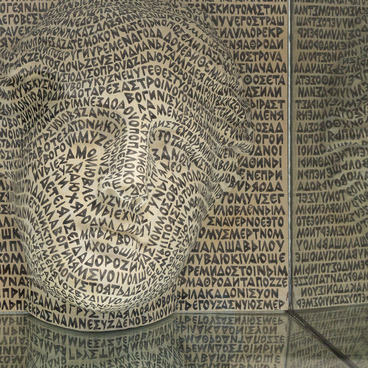Yevgeny Vyacheslavovich Radchenko was an Honored Artist of Russia, Honorary citizen of Kostroma. His name is well known — primarily as a fabric designer and master of tapestry — to both the audience and the professional community.
In 1961, he graduated from the Moscow Textile Institute, where he majored in production art in weaving. Until 1995, Radchenko worked in Kostroma at the factory of the “October Revolution”. There he worked his way up from artist to the head of an art workshop. For his great achievements in 1990, he was awarded the title of “Honored Worker of the Textile Industry of Russia”.
The artist’s works have always attracted the attention of viewers at regional and national exhibitions. At the same time, the talented master of decorative art also became known as an outstanding graphic artist. The monotypes of Yevgeny Radchenko from the 1960s and 1970s convey a special mood.
These works were created based on his impressions from travels and creative trips to old Russian cities, the Baltic countries and Karelia. At the same time, the artist used many drawings as references for creating decorative fabrics.
Yevgeny Radchenko’s monotypes dedicated to the cities in which he lived or was passing through are not so much landscapes as they are architectural portraits of monuments of medieval architecture. Kostroma with its architectural ensembles was one of the artist’s favorite subjects.
This theme is reflected in “Kostroma. Ipatiy” — his monotype from the museum’s collection. The artist depicted the monastery wall with towers and a part of a wooden church rising above the wall in the background. On the right, under the crowns of old trees, one can see wooden houses. It is as if they are hiding behind the sturdy monastery walls.
The artist depicted only
a fragment of the architectural monument. He used a red-brown color for both
the contours and the hatchings. In spite of that, the artist’s talent as a
draftsman and his sense of harmony and beauty allowed him to convey the immense
power of the monastery walls, the magnificence of the temple, and the bitter
taste of loss caused by the disappearance of wooden architecture.




